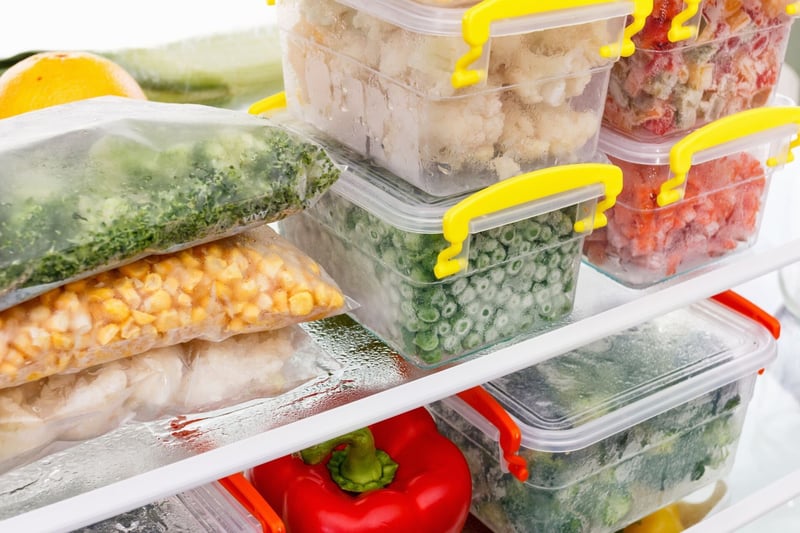
When we waste food, we waste the labour, effort, investment and precious resources (like water, seeds, feed, etc.) that go into producing it, not to mention the resources that go into transporting and processing it. In short, wasting food increases greenhouse gas emissions and contributes to climate change!
To address this, leftover foods can be a blessing to both your budget and your time. They’re also a great way to diminish food waste.
Whether you’re eating at home or out at a restaurant, don’t let leftover edible food go to waste in the trash or compost bin. No amount is too little to save when your hard-earned money and resources are on the line.
World stats are actually quite frightening of how much waste stems from households.
One of the ways people waste food in their homes is by cooking too much and forgetting about, or not eating up, their leftovers.
The culinary artist at Granny Mouse Country House & Spa would like to share some worthy tips when going out to buy produce at the local grocery store that will help you save money and time and help you use up efficiently.
To start, always look at what you currently have in your fridge, freezer or pantry cupboard and then make a list and stick to it. How many of us are guilty of going shopping, while hungry, and completely vying off track because the food looks good?
Try having a plan when making the list too, as this helps tremendously when planning the meals for the week which is more doable than for the month.
After cooking, if there is a fair amount of food left over, freeze it, so if you don’t feel like cooking one night, there is something available to defrost.
Try to not get caught with specials i.e. buy three and pay for two, as there will no doubt be wastage. If you do buy in bulk, especially meat, divide it into portions and freeze for later. If you are buying specials, look at imperfect options as sometimes these can save you some money (provided they are still safe and nutritious).
When storing fruits and veggies, most of them tend to rot quite quickly, so make sure they go into the fruit draw of the fridge. Make sure your potatoes, onions and garlic are stored in cool, dry and dark places. .
Once you have opened up a food item that has been packaged e.g. cornflakes etc. make sure you store in an airtight container.
Take into account the season too. In Summer, do not leave perishable food at room temperature as you will be throwing it away in no time.
Your freezer is probably your best friend when it comes to storing and preserving food, such as your bread and fruit (even bananas, which make for a base for fantastic smoothies).
Something of interest - the fridge door is the warmest part of the fridge so don’t store eggs and milk there as they are likely to go off quickly. The lowest shelves are the coolest parts of the fridge, and check that the temperature of your fridge is sitting at around 4°C.
If you have cooked up a meal and you don’t want to eat it in that way again, then repurpose it. Make a soup, a stew, or even stir fry.
For those of us that love to dine out, if you cannot finish you meal, get a “doggie” bag or, better still, bring your own container, as polystyrene is a form of plastic that finds its way into our oceans and kills so much of our marine life.
The delight of having takeaway food the next day for lunch at the office saves you time from having to make lunch, or buying lunch.
Hopefully these tips will help reduce landfills, conserving our resources and, of course, saving your hard earned cash.
Get new press articles by email
Latest from
- Park Square inaugural high tea!
- The Sun & Your Skin - Great Tips for Summer Skincare
- Park Square Keeps On Giving With Dear Santa!
- A R300 000 ENTREPRENEUR BUSINESS START- UP PACKAGE IS UP FOR GRABS!
- It’s Going To Be A Funfilled Festive @ The Pav!
- Tucking into taptuck!
- Something Borrowed, Something Blue!
- Taptuck has your school solutions covered!
- Why one should create a water feature in your garden!
- Pumla Vilakazi – inspired to grow small business
- The Midlands “Mouse House” Team will take care of your team!
- Fidzani Nduna – balancing societal needs with profit
- Granny Mouse Welcomes Executive Chef Lebo!
- Tapping into White!
- Touch Wood - Launch was a success!
The Pulse Latest Articles
- Fast, Connected, Screen-free: The Big Toy Trends Defining Christmas 2025 (December 4, 2025)
- Dezemba Coolerbox Culture: The Small Summer Swaps That Make A Big Difference (December 4, 2025)
- Amarantine Travels Launches Summer Season Tours Showcasing South Africa’s Culture, Coastline And Winelands (December 3, 2025)
- Steinmüller Africa Teams At Kriel And Majuba Hit 1 Million Rcr‑free Hours (December 3, 2025)
- Natasha Van Der Merwe’s Festive Shopping Picks: Wellness, Style And A Little Treat (December 1, 2025)
